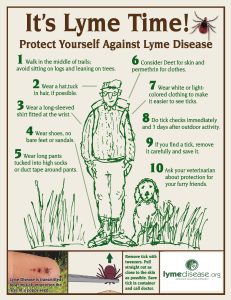The rise may be due to “a combination of things,” including more awareness about the disease and our ability to more accurately test for it than in years past, said Alvaro Toledo, an assistant professor at Rutgers University who studies ticks.
But, the other reasons, according to Toledo, are most likely due to New Jersey’s large population of rodents and deer.
The deer tick (or the black-legged tick), which New Jersey is notorious for, is not born with Lyme disease. It has to acquire it just like humans. How? Typically rodents, specifically the white-footed mouse, he said.
These ticks then need deer to feed, mate and make babies.
New Jersey’s large population of deer and rodents has allowed the ticks to stay in business.
“Having a lot of them allow ticks to multiple and lay many eggs that later on will hatch.”
While the rate has climbed in the state overall, some counties have been faring worse than others.

21. Cape May County